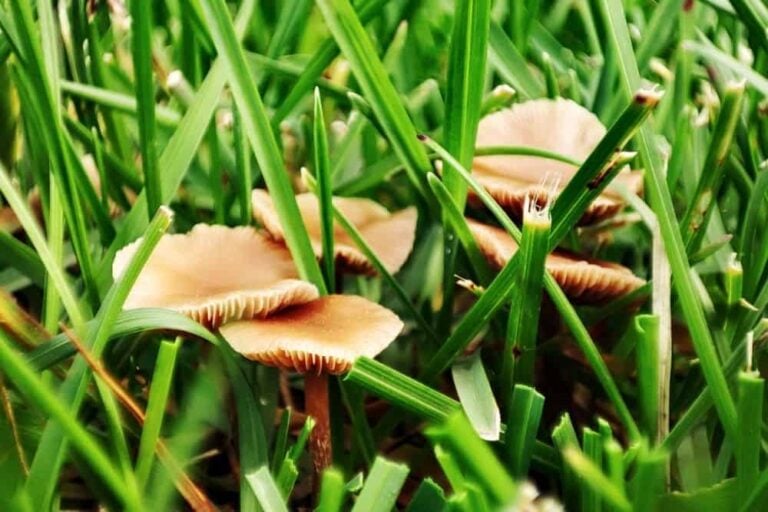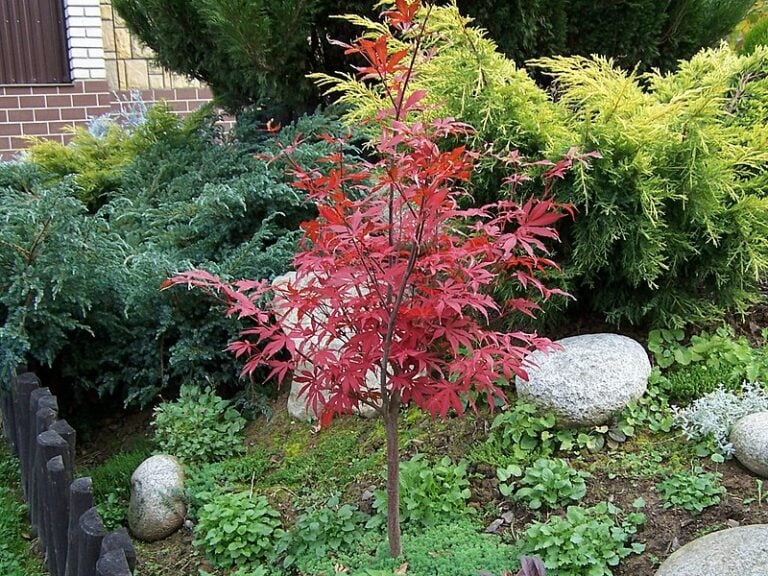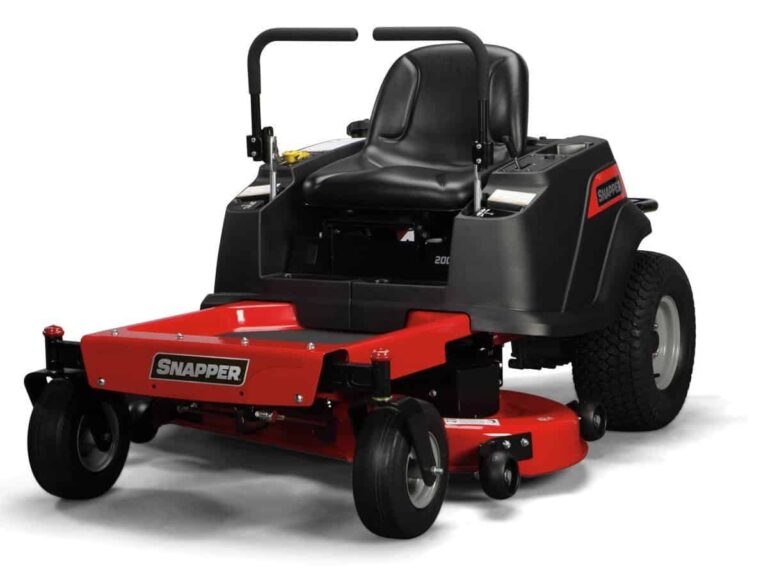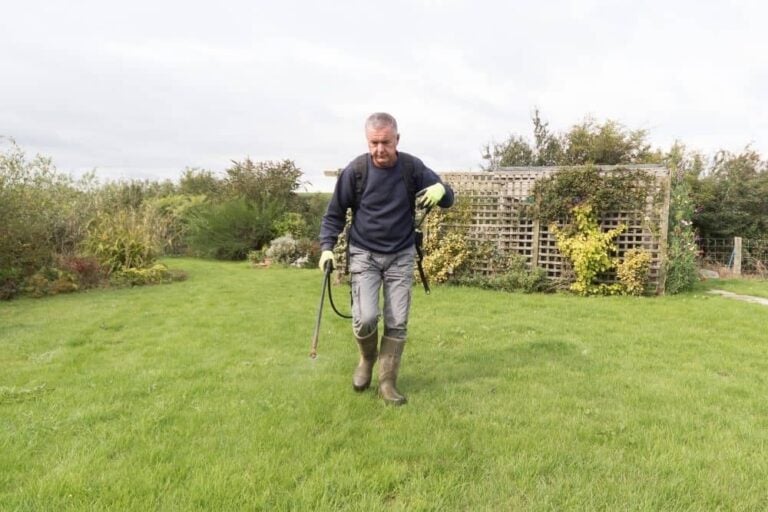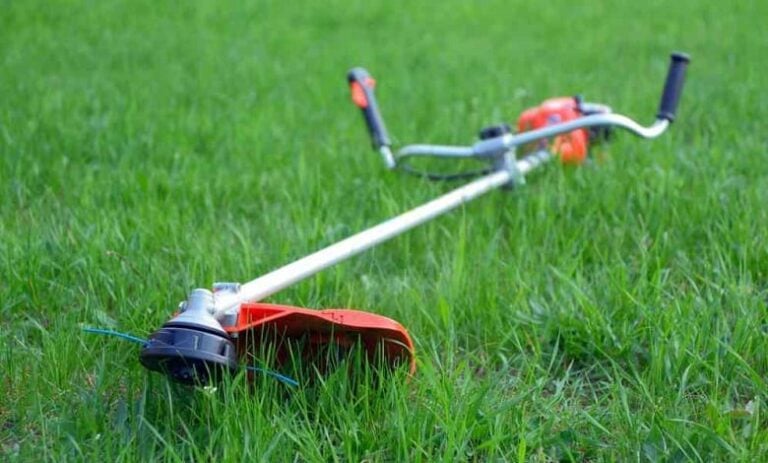Kickstart Your Garden with the Best Grass Starter
Scotts Turf Builder Starter Food is, for our money, the best grass starter for your garden. This can give your grass seeds the perfect boost with its nutrient mix of nitrogen, phosphorus, and potassium, while also preventing weeds from taking over your lawn. For best results, apply this grass starter directly after you plant your grass seeds, and right before you water for the first time. This starter food is best for Kentucky bluegrass, fescues, centipedegrass, and ryegrass varieties. We love this starter food, but for more options, keep reading below.
Our Top 5 Picks for Best Grass Starter
[wptb id="8190" not found ]Challenges of Establishing a New Lawn
Growing a new lawn isn’t always easy. Depending on the area you live in, your soil conditions and climate can present challenges. All yards are different and no two lawns can be expected to grow exactly the same.
According to SodCo, the following are some of the most common problems that people face when growing new lawns
Shade and Sun
Some lawns get full sun, while others have a lot of shade from tall trees, hedges, or shrubbery. Excessive sun can pose a threat to lawns, as it can scorch wet grass blades or dry out grass seeds that haven’t yet germinated.
Shade, on the other hand, can cause challenges with several grass varieties. To perform photosynthesis, most grass needs at least a few hours of full sun each day. Shady lawns may have several bare spots or brown grass.
Variety-Specific Problems
Just as all flowers and trees thrive under different conditions, so do the numerous different grass varieties. Some are low-maintenance, where others need consistent mowing, watering, fertilization, and more. Some varieties can withstand a high amount of foot traffic, whereas other varieties will die off in excessive traffic.
It’s important to learn about different grass varieties so you can find the perfect one for your needs. If you don’t have a lot of time to cater to your lawn, for example, you likely won’t find success with a high-maintenance grass seed.
Climate and Soil
Your region’s climate and soil conditions are the most important things to consider when choosing a grass variety. Warm season and cool season grasses thrive under specific conditions, and usually won’t perform their best, if at all, in different conditions.
The National Gardening Association provides a USDA Hardiness Zone Finder that can help you search, by zip code, for more information about your specific area. Once you learn what your zone is, there is plenty of information available online for free to help you narrow down the best grasses to grow in your location.
Weeds, Pests, and Disease
Once grass begins to grow, contaminants, like weeds, pests, and disease pose a threat to your establishing lawn.
It’s important to give your lawn the best, healthiest start possible to help prevent these from causing bare spots, an uneven lawn, or even killing off your lawn. A grass starter food and fertilizer can help give your lawn a jump start, while also feeding it the proper nutrients to help prevent disease and pests.
Using Grass Starter to Establish a New Lawn
A grass starter, also called a starter fertilizer, helps kick start the growth of your lawn. Slow-growing grass is more prone to bare spots, brown spots, weed growth, and disease. The healthier your lawn starts, the healthier it will continue to grow.
According to University of California Statewide Integrated Pest Management Program, most starter fertilizers contain nitrogen, phosphorus, and potassium. The label will show you how much of each nutrient is in the formula using the Nitrogen-Phosphorus-Potassium (N-P-K) guideline.
These nutrients work together to help boost the growth and spreading of your new lawn. They’ll also help prevent contaminants in the soil that can cause weeds and disease.
Each type of grass starter will have its own, specific instructions for use, such as when is best to apply it for the first time and how often to apply it thereafter.
However, there are a few general rules to follow to make the best out of your grass starter food or fertilizer:
- Apply grass starter to the soil before you plant seeds. You can do this as you till your yard to ensure that the fertilizer reaches a few inches into the soil.
- Take care not to over-fertilize. Check with your brand to see if you should fertilize again after you seed, or wait for a specific time period.
- Only use grass starter where you’ll be planting grass seed. It can damage other flowers or plants in your garden (source).
Tips for Caring for Your New Lawn
Once your grass begins to grow, you should fertilize according to the specific needs of your grass variety. Some grasses need a few fertilizations through the growing season, and for others, only one is necessary.
Continuously check your lawn for obstructions, like rocks and weeds. Rocks can create bare spots in your lawn, and weeds will compete with your grass’ root system for water and nutrients. Keep your lawn free of fallen leaves as often as possible, as they’ll also cause your grass underneath to die off.
You may also consider overseeding your grass in the winter. This will encourage your lawn to stay greener longer, while also filling in any bare or brown spots. If you decide to overseed, do so while your days are still warm enough to trigger germination (source).
The following video by B&Q provides an excellent, step-by-step guide to keeping your lawn looking its best all year:
Our Recommendation: Scotts Turf Builder Starter Food
Scotts Turf Builder Starter Food is an excellent choice for best grass starter for those looking to establish a new lawn. This starter food has the nutrients you need to fuel your new seed growth, while also containing a weed prevention formula to keep your grass dominating your lawn.
This particular starter food can be applied while seeding your grass. Scotts recommends using it for certain varieties:
- Kentucky bluegrass
- Tall and red fescues
- Centipedegrass
- Perennial ryegrass
You should avoid using it on Bermuda grass, St. Augustine, zoysia grass, and a few other varieties where fertilization isn’t recommended during the germination period.
You’ll need at least 4 pounds of this formula per 1,000 square feet of yard space. Apply it directly after planting your seeds, and before you water for the first time, for the most success. Do not apply any other pesticide or herbicide, and take care to keep this formula away from other flowers, trees, plants, or shrubs in your yard.
The optimal time to plant your seeds and use this product is in the early morning or early evening hours, when the temperatures are still warm but your yard isn’t in full sun. Doing so will ensure that you’re not scorching your seeds after watering them and applying the grass starter in excessive sunlight.

